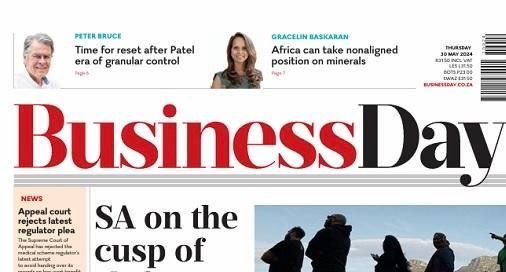Africa can take nonaligned position on minerals

Middle Eastern countries are competing with China in making investments in Africa
It’s been a busy month — I’ve been in Saudi Arabia, the United Arab Emirates (UAE), SA, Zambia and Namibia. Across these jurisdictions, I’ve seen critical minerals strategies, the source of new investments, the weaknesses of current mining frameworks in development countries, and importantly — where there are opportunities.
My take? The Middle East is a critical partner for both African and Western countries. It’s an important third option beyond the east and west. It’s no longer binary.
I was in Zambia last week meeting senior government officials — and one thing was clear, it was the Middle East — not the east or west — that has made the strongest effort to invest in Zambia. And it was certainly welcome. In particular, it has been the UAE that has made the most progress.
IHC, based in Abu-Dhabi, is on track to own a significant share of Zambia’s largest copper assets — KCM and Mopani. IHC CEO Syed Basar Shueb noted that the majority of its bidding was done by “competing with the Chinese. There’s no other countries.” That’s not surprising.
Not to say that Saudi Arabia hasn’t come to the table — Saudi’s Manara is eyeing its own assets in Zambia.
Nonetheless, there are still difficulties with investing. The government of Zambia is advocating for a private mining cadastre to sell the information, which is firmly against best practice. Private cadastres give way to corruption and a lack of transparency. Still, the government is engaging with the private sector as to not deter investment.
Zambia is also looking to put in a local content policy that says that any contract under $1m must have 100% Zambian ownership. There’s neither that level of capital nor adequate domestic capital markets to make that work. That’ll have to go to prevent a bottleneck to the private sector.
After Zambia, I went to Namibia — perhaps one of the most resource-rich countries on the continent, with significant reserves of rare earths, lithium, uranium, copper, nickel and graphite. There too, the Middle East had recently been to advance discussions on investments, right alongside the Australians and Canadians.
The week before I visited Zambia and Namibia, I spent a week in Saudi Arabia where I engaged with the ministry of industry and mineral resources. The ministry was clear — Africa was a priority and a core part of their critical minerals strategy that’s under development. Similarly, the UAE has its critical minerals strategy under development, with Africa featuring.
Critical minerals strategy
But the problem is that many African countries I’ve engaged with don’t have their own critical minerals strategy yet, which makes strategic engagement difficult. What is actually a critical mineral, they often ask? It takes alignment of strategies from both sides to make the system work in a way that’s mutually beneficial.
For whatever it’s worth, the US doesn’t have a cohesive international critical minerals strategy for international engagement — it’s why I’m writing a generously funded book, hoping to plug the gaps of where the US should go; which commercial diplomacy instruments the US should deploy: and who the US should partner with to execute this strategy. The reality is that the Middle East has to be a key partner given the capital it has to deploy.
Diversified sources of investment is healthy. I’m not anti-China — but I don’t believe any country should dominate supply chains the way China has. Minerals can be something on which African countries — and emerging markets as a whole — can truly take a “nonaligned” position — working with the country that gives you the best deal, in terms of expanding investment, building infrastructure, pursuing value addition and so on.
But compared to five or 10 years ago, there are more players who are willing to step up and do that. Much of the water infrastructure in Namibia or energy infrastructure in Zambia is being built by or for mining companies — sometimes for neighbouring communities too.
As diverse producers race to Africa, a nonaligned position is a good one. One mustn’t over-align with the east or west. There are more alternatives.